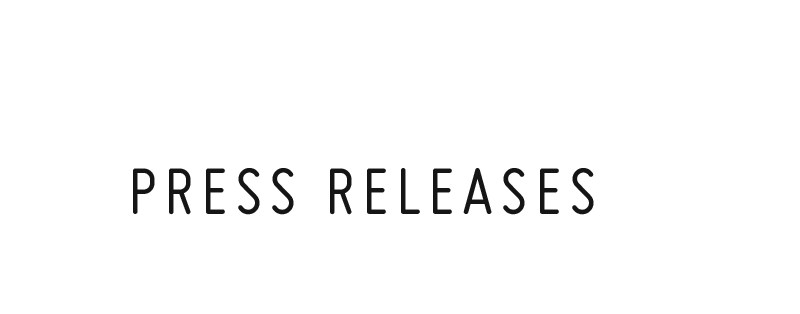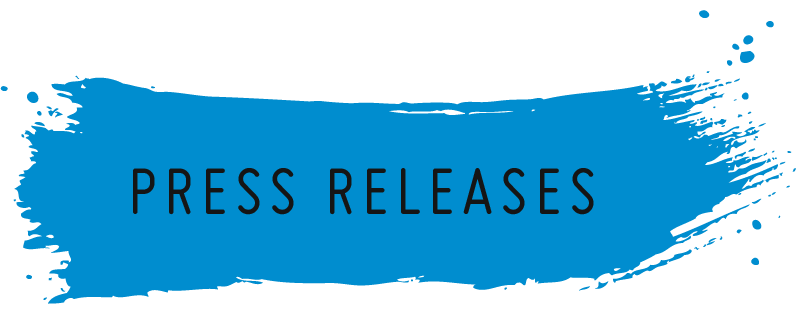- 3D Print Bureau
- 6K
- Agmatix
- Airwayz
- AM-Flow
- Appadda
- Caracol
- CG Trader
- CyberOptics
- e-Xstream
- GenCell
- GreenEye
- Impossible Objects
- Incus Media
- InkBit
- ITG
- JPB Systeme
- KeyProd
- Landa
- LEO Lane
- Lumet
- Magic Software
- MakerBot
- Marketiger
- Nano Dimension
- Paragon Rapid Technologies
- PearlX
- Plant & Bean
- Redefine Meat
- Replique
- Ripples
- Sakuu Corporation
- SolarEdge
- StoreDot
- Stratasys
- Sunrock
- The Bespoke Group
- Trigo
- UltiMaker
- Xjet
VHM FONDERIE EMPLOYS STRATASYS 3D PRINTING ACROSS VARIOUS PRODUCTION PROCESSES TO SPEED UP CUSTOMER TURNAROUND TIMES AND IMPROVE CAPACITY
French foundry and machining company sees lead times cut from up to five weeks to a few hours when producing master models for sand casting molds
Stratasys Connex Multi-material 3D Printer utilized for wide array of applications including prototyping, tooling, replacement of obsolete and spare parts, as well as final part production
Minneapolis & Rehovot, Israel, December 12, 2016 — Stratasys Ltd. (Nasdaq:SSYS), the 3D printing and additive manufacturing solutions company, today announced that French foundry and machining company, VHM Fonderie, is experiencing faster product development time and improved capacity since introducing PolyJet 3D printing across its entire design and manufacturing process. Further exploiting the wider potential of its Stratasys Connex Multi-material 3D Printer for external customers, the company has established its own service bureau, Reali3D.
VHM Fonderie (formerly Heinrich Fonderie), which specializes in the production of various types of industrial iron castings using the traditional sand casting process, utilizes its Stratasys Connex Multi-material 3D Printer across a broad spectrum of applications throughout product development. This includes everything from the production of functional prototypes and master models for sand casting, to manufacturing tools, as well as the 3D printing of spare production parts for certain tooling machines.
For complex sand casting applications in particular, the company is using Stratasys’ advanced simulated polypropylene material, Rigur, to produce 3D printed models that are subsequently used to make sand molds.
“To manufacture an object using the sand casting process, we need to first produce a master model of the specific part,” explains Laurent Poux, Industrial Director, VHM Group. “This is then used to make a mold, from which the desired object itself is then manufactured. In the context of the end-to-end manufacturing workflow, the level of time-saving enjoyed with 3D printing isn’t merely improvement or progression – it’s transformational.
“With 3D printing, we save about a month when it comes to producing the various models used to create our molds. This enables us to deliver orders for our customers incredibly quickly, which has in turn improved our capacity,” he adds.
Such time-savings allows VHM Fonderie to reduce product development time for the many castings it manufactures for its clients. As well as the VHM Group’s other businesses, this comprises a number of external clients – among them, Paris landmarks like the Le Jardin des Tuileries, Le Caroussel du Louvre and La Place Vendôme, as well as companies like flow management solutions provider, Flowserve.
According to Poux, 3D printed molds are just one application in which its Stratasys Connex 3D Printer is deployed. Another area of use is in the production of various tooling items, such as positioning jigs that are used across the assembly line to increase production efficiency. The 3D printer’s use has even been extended to replacing obsolete parts for the company’s tooling machines, such as its belt sander machine, providing VHM Fonderie with a new level of versatility in production.
“Use of Stratasys 3D printing technology has given us a level of self-reliance that has not only revolutionized some of our traditional production processes, but it has allowed us to become significantly more flexible as a company when it comes to manufacturing,” says Poux. “We’re really excited to be able to extend the benefits of 3D printing to our customers through Reali3D, where we expect to produce everything from concept models and fully-functional prototypes, to assembly tools for the production line.”
“VHM Fonderie is the perfect example of how a growing number of manufacturers are not merely exploring the use of 3D printing in a limited capacity, but are reaping multiple benefits through its widespread integration across all areas of production,” says Andy Middleton, President, Stratasys, EMEA. “Stratasys remains committed to educating the market and working closely with customers to ensure that, like VHM Fonderie, they maximize the full potential of 3D printing technology to reduce time and costs within their manufacturing operations.”
-
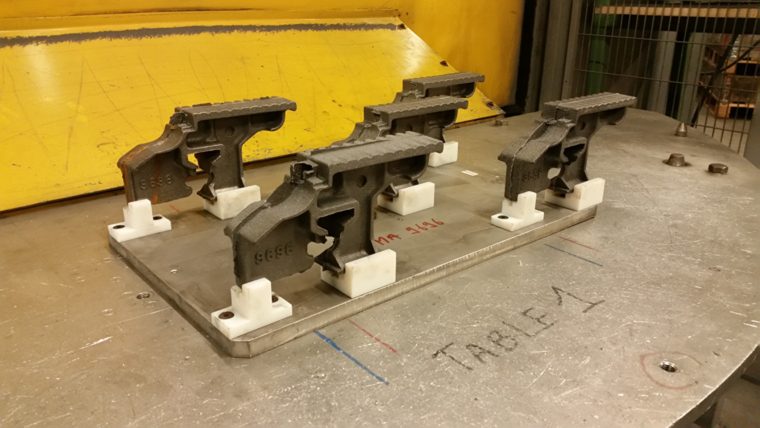 3D printed production tools include positioning supports (seen here in white) for VHM Fonderie’s deburring robot
3D printed production tools include positioning supports (seen here in white) for VHM Fonderie’s deburring robot
Click here to download 300dpi images -
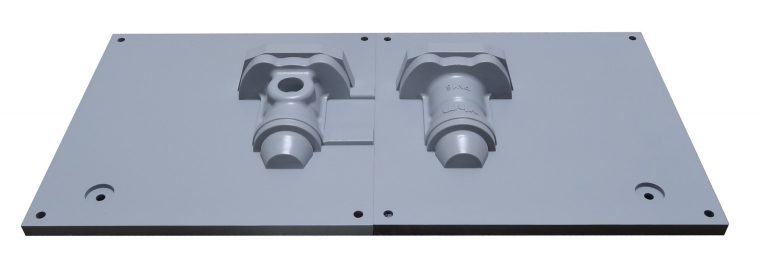 VHM Fonderie uses 3D printing to produce ‘master models’ that are then used to create sand molds
VHM Fonderie uses 3D printing to produce ‘master models’ that are then used to create sand molds
Click here to download 300dpi images
VHM FONDERIE UTILISE L'IMPRESSION 3D STRATASYS DANS PLUSIEURS PROCESSUS DE PRODUCTION POUR RÉDUIRE SES TEMPS D'EXÉCUTION ET RENFORCER SES CAPACITÉS
La société française de fonderie et d’usinage voit les délais de réalisation de ses modèles maîtres destinés à la fabrication de moules pour la fonte au sable passer de cinq semaines à seulement quelques heures
L’imprimante 3D multi-matériaux Connex de Stratasys a été utilisée dans de nombreuses applications, notamment le prototypage, l’outillage, le remplacement de pièces obsolètes et de rechange, ainsi que pour la production de pièces finales
Minneapolis & Rehovot, Israël, 14 décembre 2016 — StratasysLtd . (Nasdaq:SSYS), la société de solutions d’impression 3D et de fabrication additive, a annoncé aujourd’hui que la société française de fonderie et d’usinage VHM Fonderie parvient à réduire ses délais de développement du produit et à renforcer ses capacités depuis qu’elle a intégré l’impression 3D PolyJet à l’ensemble de son processus de conception et fabrication. Afin d’exploiter davantage le potentiel de son imprimante 3D multi-matériaux Connex de Stratasys pour ses clients externes, la société a créé son propre bureau d’études, Reali3D.
VHM Fonderie (auparavant, Heinrich Fonderie), qui est spécialisée dans la production de différents types de pièces industrielles moulées en fonte par le processus traditionnel de fonte au sable, a installé une imprimante 3D Objet500 Connex 2 en 2015 grâce à la société CADVision, partenaire français de Stratasys. Depuis lors, l’imprimante est utilisée dans un large éventail d’applications tout au long du processus de développement du produit. Cela inclut toutes les étapes, depuis la production de prototypes fonctionnels et de modèles maîtres pour la fonte au sable jusqu’aux outils de fabrication, en passant par l’impression 3D de pièces de rechange de production pour certaines machines-outils.
Pour les applications complexes de fonte au sable, la société emploie un matériau avancé de Stratasys simulant le polypropylène, Rigur, avec lequel elle produit des modèles imprimés en 3D qui sont ensuite utilisés dans la fabrication des moules en sable.
« Pour fabriquer un objet à l’aide du processus de fonte au sable, nous devons tout d’abord produire un modèle maître de la pièce », explique Laurent Poux, directeur industriel, Groupe VHM. « Celui-ci est ensuite utilisé pour réaliser un moule, à partir duquel est fabriqué l’objet souhaité. Sur l’ensemble du processus de fabrication, le temps gagné grâce à l’impression 3D n’est pas une simple amélioration, mais bel et bien une véritable transformation.
« Avec l’impression 3D, nous gagnons presque un mois pour la production des différents modèles utilisés pour créer nos moules. Cela nous permet de livrer nos clients avec une rapidité extraordinaire, mais aussi de renforcer nos capacités », ajoute-t-il.
De tels gains de temps permettent à VHM Fonderie de réduire le délai de développement des différentes pièces de fonte qu’il fabrique pour ses clients. À l’instar des autres domaines d’activité du Groupe VHM, celui-ci s’adresse à de nombreux clients externes, dont certains des sites les plus emblématiques de Paris comme le jardin des Tuileries, le carrousel du Louvre et la place Vendôme, ainsi que des sociétés comme le fournisseur de solutions de gestion de flux Flowserve.
Selon M. Poux, les moules imprimés en 3D ne sont que l’une des nombreuses applications réalisées avec l’imprimante 3D Connex de Stratasys. Parmi ses autres domaines d’utilisation se trouve la fabrication d’outils de production tels que les gabarits de positionnement employés tout au long de la chaîne de montage pour augmenter l’efficacité de la production. L’imprimante 3D a même été utilisée pour remplacer des pièces obsolètes sur les machines-outils de la société, notamment sa ponceuse à bande, ce qui accroît encore la polyvalence de production de VHM Fonderie.
« L’utilisation de la technologie d’impression 3D de Stratasys nous a permis d’atteindre un niveau d’autonomie inédit qui n’a pas seulement révolutionné certains de nos processus de production traditionnels, mais a accru considérablement la flexibilité de notre processus de fabrication », affirme M. Poux. « Nous sommes réellement ravis à l’idée de pouvoir faire profiter nos clients des avantages de l’impression 3D à travers Reali3D. Cette structure devrait nous permettre de produire aussi bien des modèles de concepts et des prototypes totalement fonctionnels, que des outils de montage pour la ligne de production ».
« VHM Fonderie est un parfait exemple du nombre croissant de fabricants qui ne se contentent pas d’une utilisation limitée de l’impression 3D, mais tirent parti de son intégration dans tous les domaines de la production », souligne Andy Middleton, Président, Stratasys, EMEA. « Stratasys cherche encore et toujours à éduquer le marché et à travailler en étroite relation avec ses clients pour leur garantir, comme dans le cas de VHM Fonderie, une véritable optimisation du potentiel de la technologie d’impression 3D, en vue de réduire les délais et les coûts de leurs opérations de fabrication ».
-
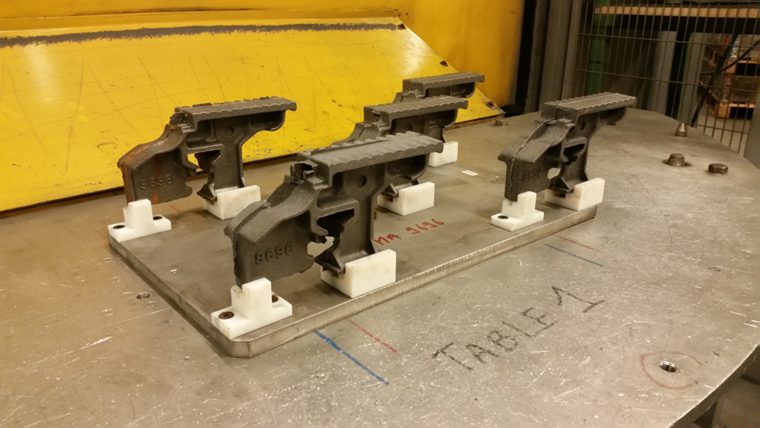 Parmi les outils de production imprimés en 3D se trouvent ces supports de positionnement (ici en blanc) pour le robot d'ébavurage de VHM Fonderie
Parmi les outils de production imprimés en 3D se trouvent ces supports de positionnement (ici en blanc) pour le robot d'ébavurage de VHM Fonderie
Click here to download 300dpi images -
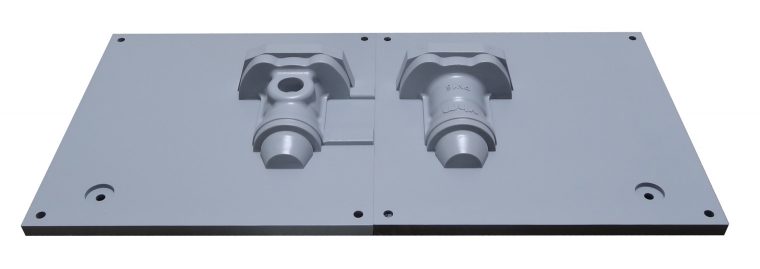 VHM Fonderie utilise l'impression 3D pour produire des modèles maîtres qui sont ensuite employés dans la fabrication des moules en sable
VHM Fonderie utilise l'impression 3D pour produire des modèles maîtres qui sont ensuite employés dans la fabrication des moules en sable
Click here to download 300dpi images
